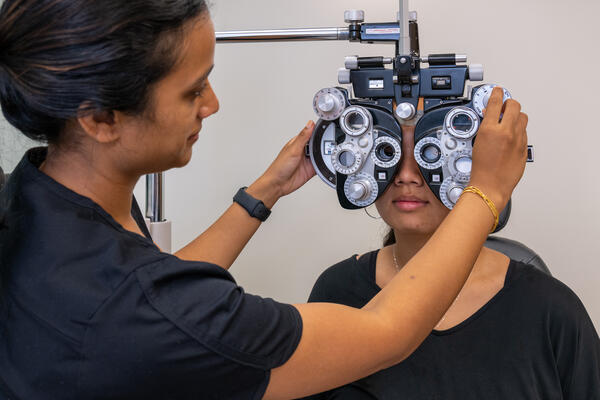Find a Neurologist in Andalusia: Specialized Clinics and Care Providers
Find a Neurologist in Andalusia: Specialized Clinics and Care Providers
Blog Article
The Benefits And Drawbacks of Various Refractive Surgical Treatments for Improved Eyecare

LASIK Surgery
LASIK surgery is a frequently carried out refractive procedure that intends to remedy vision problems such as farsightedness, astigmatism, and nearsightedness. Throughout the procedure, a thin flap is developed on the cornea, and a laser is used to improve the underlying tissue, dealing with the refractive error.
One of the main advantages of LASIK surgical procedure is the fast improvement in vision experienced by numerous people. It is important for individuals thinking about LASIK surgical procedure to undergo a complete evaluation by an eye treatment professional to figure out if they are suitable candidates for the procedure.
PRK Treatment
The PRK procedure, likewise known as Photorefractive Keratectomy, is a type of refractive surgery that intends to fix vision issues similar to LASIK surgical treatment. Unlike LASIK, which involves producing a flap in the cornea, PRK works on the surface area layer of the cornea.
One of the advantages of PRK over LASIK is that it eliminates the danger of flap-related problems considering that no flap is developed throughout the surgery. Regardless of the longer healing period, PRK can be an appropriate alternative for individuals looking for vision improvement surgical procedure.
SMILE Surgery
A sophisticated refractive surgical procedure strategy getting popularity in the area of ophthalmology is SMILE Surgical procedure. Small Laceration Lenticule Extraction (SMILE) is a minimally intrusive treatment that deals with vision by improving the cornea making use of a femtosecond laser. Unlike standard LASIK surgery, SMILE Surgical treatment involves producing a little cut in the cornea to draw out a lenticule, which leads to much less disturbance to the corneal framework and possibly much faster recovery times.
One of the primary benefits of SMILE Surgical treatment is its capacity to deal with myopia (nearsightedness) and astigmatism with high precision, bring about excellent aesthetic end results for clients. The minimally invasive nature of the procedure also lowers the risk of difficulties such as dry eye disorder, making it a favorable alternative for people seeking refractive surgery.

LASEK Method
Having actually explored the benefits and factors to consider of SMILE Surgery, one more significant refractive surgery method worth taking a look at is the LASEK Strategy. LASEK, which means Laser-Assisted Subepithelial Keratectomy, is this link a type of laser eye surgical treatment that intends to fix refractive mistakes such as myopia (nearsightedness), hyperopia (farsightedness), and astigmatism.
Unlike LASIK, LASEK does not entail creating a corneal flap. Instead, during a LASEK treatment, the cosmetic surgeon uses a diluted alcohol remedy to loosen the slim outer layer of the cornea, referred to as the epithelium. This layer is after that delicately relocated aside to allow her latest blog the laser to improve the underlying corneal cells. When the cornea has actually been reshaped to the wanted level, the epithelial layer is repositioned.
Among the key benefits of LASEK is that it can be appropriate for people with thin corneas that may not be excellent candidates for LASIK. Additionally, LASEK normally causes marginal post-operative discomfort and a quicker healing time contrasted to PRK. Nevertheless, the visual healing process with LASEK might be somewhat longer than with LASIK.
Implantable Contact Lenses
Implantable Call Lenses provide a long-lasting vision correction remedy for individuals looking for an alternative to standard call lenses or glasses. These lenses, additionally referred to as phakic intraocular lenses, are surgically put right into the eye to fix refractive errors such as myopia (nearsightedness), hyperopia (farsightedness), and astigmatism. cardiologist andalusia. Unlike conventional call lenses that rest on the surface of the eye, implantable get in touch with view it lenses function within the eye itself, providing clear vision without the need for everyday upkeep or elimination
Among the crucial benefits of implantable contact lenses is their permanence. As soon as put, they can stay in the eye indefinitely, supplying regular and secure vision improvement. Furthermore, these lenses can be a superb alternative for people that are bad candidates for laser eye surgery or who prefer a reversible vision correction procedure.
Nonetheless, implantable contact lenses do lug some threats, including the potential for cataracts or enhanced eye stress. It is critical for people considering this alternative to talk to an eye care specialist to determine if implantable get in touch with lenses are the appropriate option for their particular needs and eye health and wellness.
Conclusion
In verdict, each type of refractive surgical treatment has its very own benefits and downsides. LASIK surgical treatment is preferred for its quick recovery time, while PRK treatment may be ideal for individuals with thin corneas.

Overall, SMILE Surgical procedure offers an appealing option for individuals looking to improve their vision through refractive surgical treatment.
Report this page